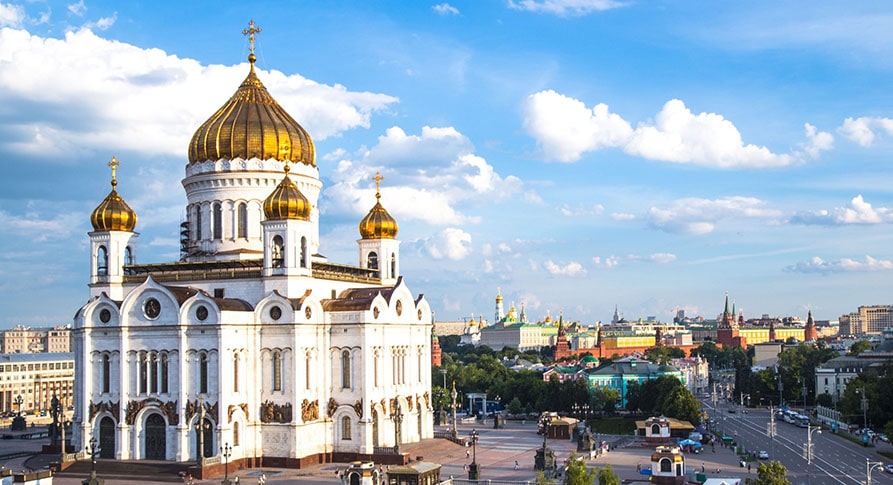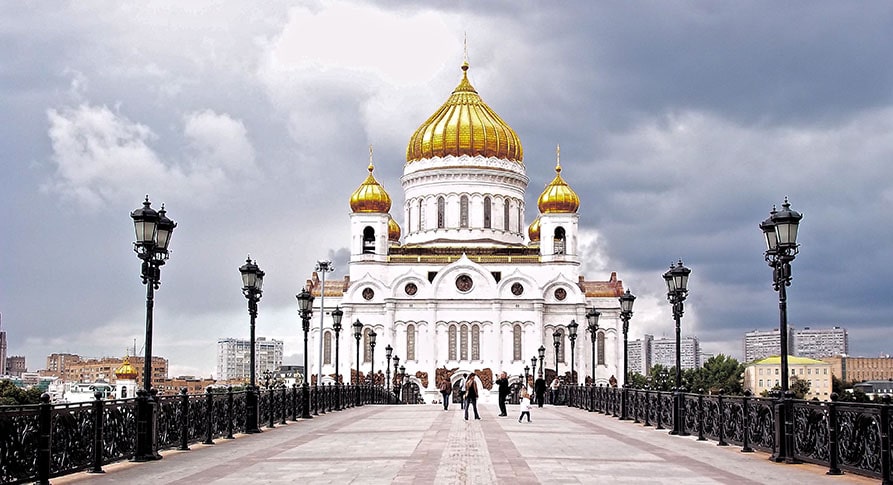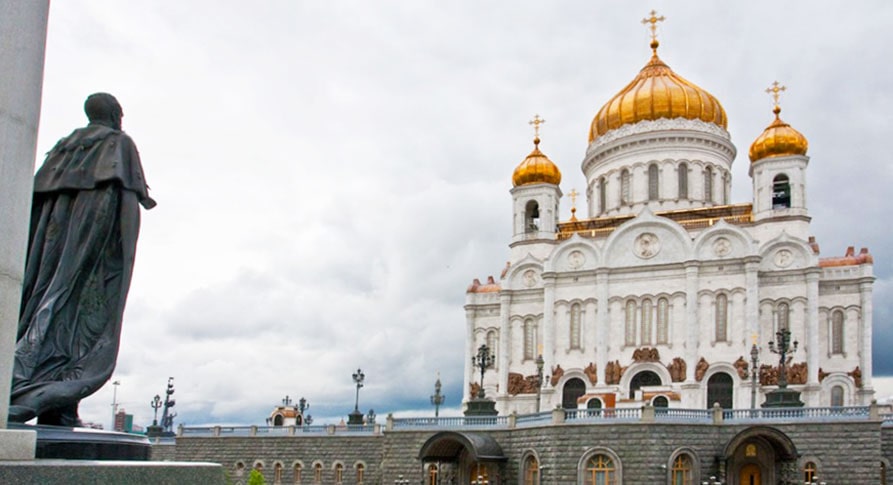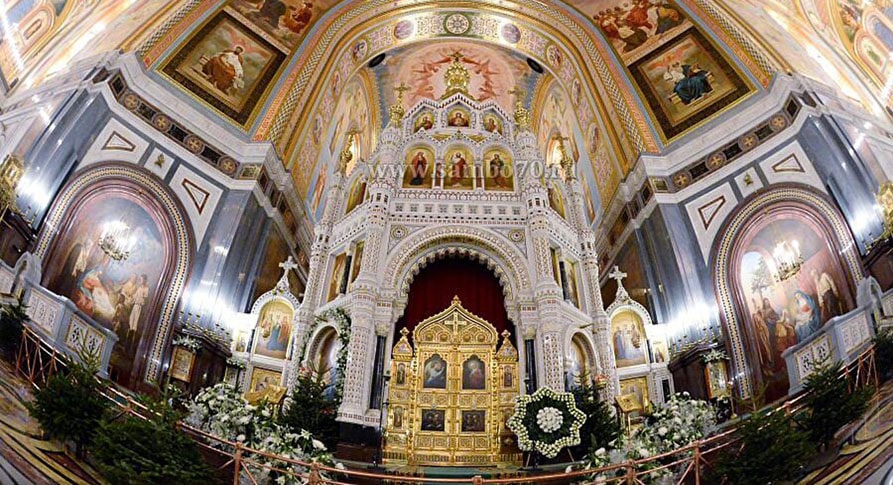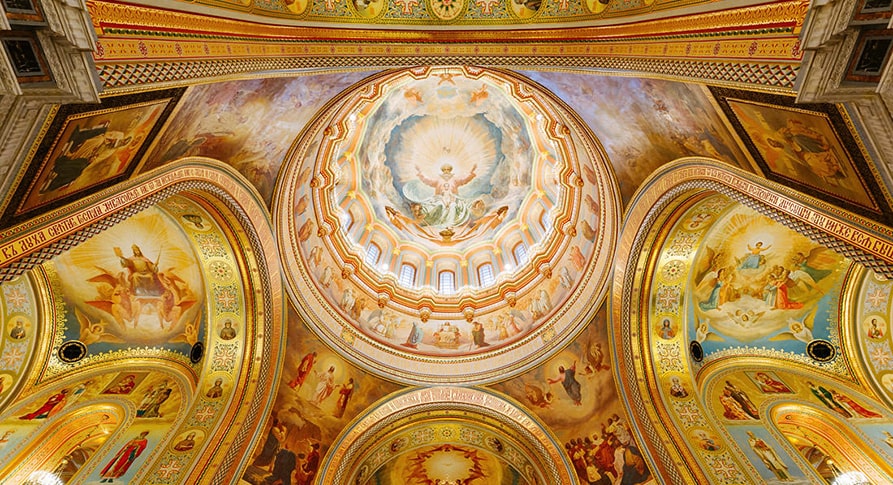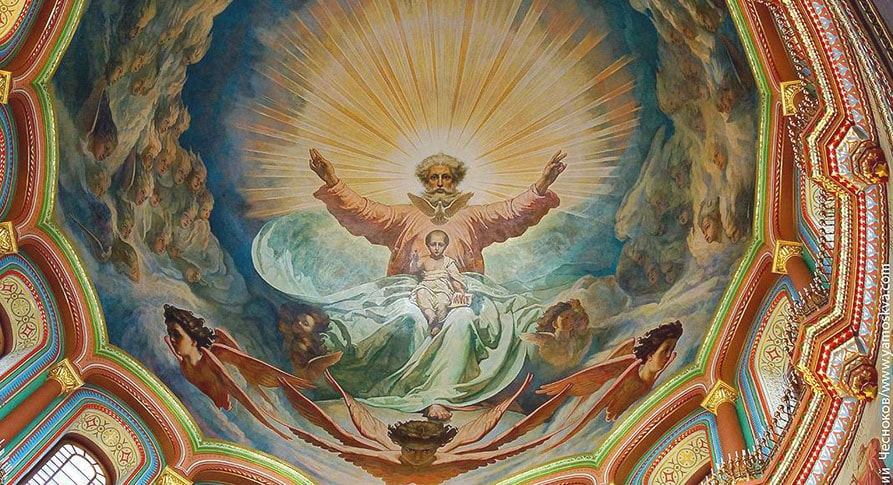Cathedral of Christ the Saviour
“Domes in Russia are covered with pure gold, so that our Lord would often spot…”
The lyric from a song by famous Russian bard Vladimir Vysotskiy immediately comes to mind when we see the huge dazzling white basilica boasting its five magnificent golden clad domes that stands proudly on the bank of the Moskva River. This is the Cathedral of Christ the Saviour, one of the most remarkable Moscow landmarks and the world’s biggest Orthodox church ever built.
Its distinguished biography is full of tales, and the dramatic destiny of the cathedral mirrored the history of all Russia of the 19-20th centuries.
The Cathedral was originally built in gratitude for the Lord’s intercession in a critical moment of the Russian history – the Napoleonic invasion of 1812. The majestic church was at the same time a military monument to celebrate the valiance and courage of the Russian people in their battle against the Great Army.
The cathedral was commissioned by Tsar Alexander I, and after passing through the hands of 3 Tsars throughout almost 44 years of construction, the Cathedral of Christ the Saviour was completed in 1883. The best architects and artists of the Russian Academy of Arts worked on its creation. The design was based on the Hagia Sophia of Constantinople. The cathedral resulted even taller than the Kremlin’s Ivan the Great Bell Tower, which up until this point had been the tallest structure in Moscow. Gilding of the five Byzantine-style domes and the roof took 20 puds of gold (almost 330 kg). Behind a spectacular façade of white marble, the enormous interior was as strikingly gorgeous as the exterior. Polished natural stone floors in eye-catching colours lay below magnificently ornate frescoes and altars. In line with its original dedication, the icons, images and sculptures of the church paid tribute to those who gave their lives for the country during the Patriotic War of 1812. The interior decoration made mostly of Carrara marble, displayed vivid scenes of the battles between Russian and Napoleonic troops.
The Cathedral of Christ the Savior was consecrated on June 7, 1883, a few days after Alexander III’s coronation. From this time onward, important events such as coronations, anniversaries and national holidays were celebrated there.
After the Bolshevik Revolution of 1917, the cathedral fell victim to the state's anti-religious campaign. Stalin had his specific designs for Moscow, and in 1931 he ordered the cathedral blown up to make space for the Palace of Soviets. That had to be the world’s largest 100- storey sky-scraper 416 meters high, with a 60-meter 1000-ton Lenin’s statue at the top - a real colossus, according to the proletarian ideological and political concepts of the time. Yet God was not willing. The land did not withstand the weight of the construction – but was that just a physical weight?..
In 1958, a huge open air swimming pool called MOSCOW was built in the gigantic cavity that was left on the site. In winter, vapor was swirling over the heated water surface, and once the famous poet Andrei Voznesensky sarcastically compared this view with sulfur smoking in a hellish cauldron... Yet to be honest, common Muscovites really loved the pool!
In 1994 it was closed and the new Christ the Savior’s Cathedral construction began. The great military, architectural and artistic monument had been restored to its former glory and consecrated in 2000. The same year the last Russian Tsar Nicholas II and his family were canonized as saint martyrs. Both events marked Russia’s renunciation of its theomachist communist past. Now Christ the Savior’s Cathedral is the magnificent symbol of renovated post-Soviet Moscow and Russia’s spiritual Renaissance. The relics of the cathedral include a part of the Seamless Robe of Jesus, a part of the Robe of Theotokos, a relic of Saint Andrew the Apostle and others.
When you visit this must-see site, you can also climb up to the observation gallery around the main drum to admire a breathtaking panorama of Moscow historical center and the Moskva River from the height of 40 meters.

